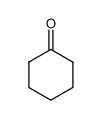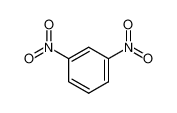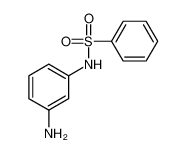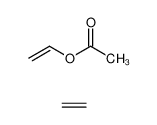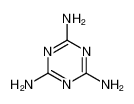| Product name | 1,3-phenylenediamine |
|---|
| Product number | - |
|---|---|
| Other names | Benzene-1,3-diamine |
| Identified uses | For industry use only. CBI,Dyes,Intermediates,Paint additives and coating additives not described by other categories,Processing aids, not otherwise listed |
|---|---|
| Uses advised against | no data available |
| Company | MOLBASE (Shanghai) Biotechnology Co., Ltd. |
|---|---|
| Address | Floor 4 & 5, Building 12, No. 1001 North Qinzhou Road, Xuhui District, Shanghai, China |
| Telephone | +86(21)64956998 |
| Fax | +86(21)54365166 |
| Emergency phone number | +86-400-6021-666 |
|---|---|
| Service hours | Monday to Friday, 9am-5pm (Standard time zone: UTC/GMT +8 hours). |
Acute toxicity - Oral, Category 3
Acute toxicity - Dermal, Category 3
Eye irritation, Category 2
Skin sensitization, Category 1
Acute toxicity - Inhalation, Category 3
Germ cell mutagenicity, Category 2
Hazardous to the aquatic environment, short-term (Acute) - Category Acute 1
Hazardous to the aquatic environment, long-term (Chronic) - Category Chronic 1
2.2 GHS label elements, including precautionary statements| Pictogram(s) | 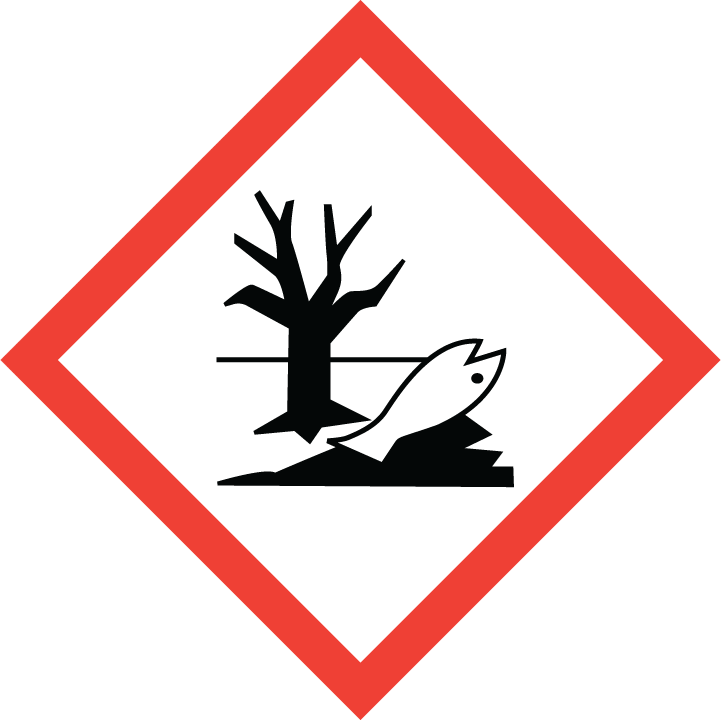 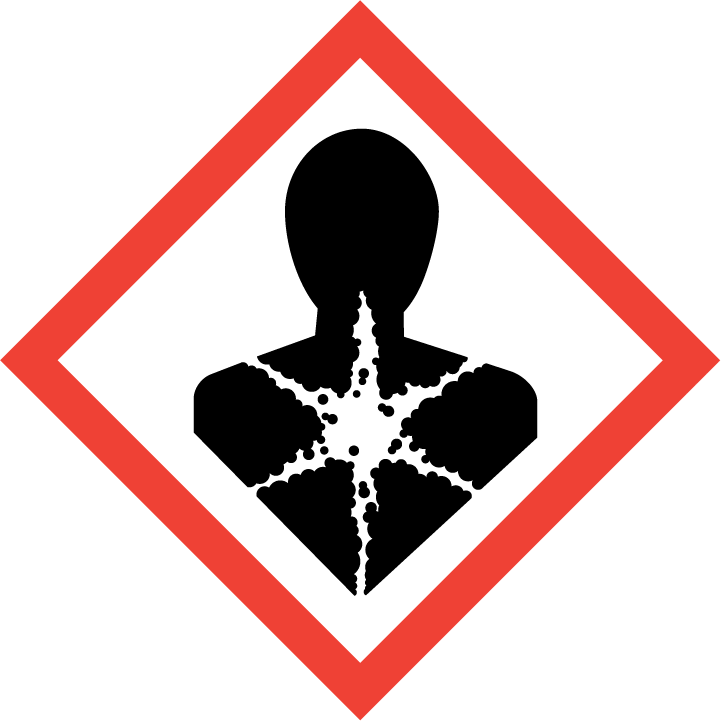  |
|---|---|
| Signal word | Danger |
| Hazard statement(s) | H301 Toxic if swallowed H311 Toxic in contact with skin H319 Causes serious eye irritation H317 May cause an allergic skin reaction H331 Toxic if inhaled H341 Suspected of causing genetic defects H410 Very toxic to aquatic life with long lasting effects |
| Precautionary statement(s) | |
| Prevention | P264 Wash ... thoroughly after handling. P270 Do not eat, drink or smoke when using this product. P280 Wear protective gloves/protective clothing/eye protection/face protection. P261 Avoid breathing dust/fume/gas/mist/vapours/spray. P272 Contaminated work clothing should not be allowed out of the workplace. P271 Use only outdoors or in a well-ventilated area. P201 Obtain special instructions before use. P202 Do not handle until all safety precautions have been read and understood. P273 Avoid release to the environment. |
| Response | P301+P310 IF SWALLOWED: Immediately call a POISON CENTER/doctor/… P321 Specific treatment (see ... on this label). P330 Rinse mouth. P302+P352 IF ON SKIN: Wash with plenty of water/... P312 Call a POISON CENTER/doctor/…if you feel unwell. P361+P364 Take off immediately all contaminated clothing and wash it before reuse. P305+P351+P338 IF IN EYES: Rinse cautiously with water for several minutes. Remove contact lenses, if present and easy to do. Continue rinsing. P337+P313 If eye irritation persists: Get medical advice/attention. P333+P313 If skin irritation or rash occurs: Get medical advice/attention. P362+P364 Take off contaminated clothing and wash it before reuse. P304+P340 IF INHALED: Remove person to fresh air and keep comfortable for breathing. P311 Call a POISON CENTER/doctor/… P308+P313 IF exposed or concerned: Get medical advice/ attention. P391 Collect spillage. |
| Storage | P405 Store locked up. P403+P233 Store in a well-ventilated place. Keep container tightly closed. |
| Disposal | P501 Dispose of contents/container to ... |
none
3.Composition/information on ingredients 3.1 Substances| Chemical name | Common names and synonyms | CAS number | EC number | Concentration |
|---|---|---|---|---|
| 1,3-phenylenediamine | 1,3-phenylenediamine | 108-45-2 | none | 100% |
Consult a physician. Show this safety data sheet to the doctor in attendance.
If inhaledFresh air, rest. Refer for medical attention.
In case of skin contactRemove contaminated clothes. Rinse and then wash skin with water and soap. Refer for medical attention .
In case of eye contactFirst rinse with plenty of water for several minutes (remove contact lenses if easily possible), then refer for medical attention.
If swallowedRinse mouth. Refer for medical attention .
4.2 Most important symptoms/effects, acute and delayedSYMPTOMS: Symptoms of exposure to this chemical may include skin sensitization reactions, eye irritation and injury, skin irritation, dermatitis, blackened skin and bronchial asthma. Other symptoms may include allergic skin reactions, irritation of the mucous membranes, nose, throat and lungs, coughing, burning sensation, runny nose, sore throat, methemoglobinemia, cyanosis, headache, dizziness, drowsiness, mental confusion, pulmonary edema, kidney and liver damage, central nervous system effects and conjunctivitis. Eye contact may cause discomfort, tearing, blurring of vision, reddening, partial clouding of the cornea and swelling of the eye and surrounding tissue. Dysuria and eosinophiluria may also occur. Exposure may also result in respiratory tract irritation. ACUTE/CHRONIC HAZARDS: This compound is harmful if inhaled, swallowed or absorbed through the skin. It causes irritation of the eyes, skin, mucous membrane and respiratory tract. When heated to decomposition, this compound emits irritating and/or toxic gases and fumes of carbon monoxide, carbon dioxide and oxides of nitrogen.
4.3 Indication of immediate medical attention and special treatment needed, if necessaryFor immediate first aid: Ensure that adequate decontamination has been carried out. If victim is not breathing, start artificial respiration, preferably with a demand-valve resuscitator, bag-valve-mask device, or pocket mask as trained. Perform CPR if necessary. Immediately flush contaminated eyes with gently flowing water. Do not induce vomiting. If vomiting occurs, lean patient forward or place on left side (head-down position, if possible) to maintain an open airway and prevent aspiration. Keep victim quiet and maintain normal body temperature. Obtain medical attention. /Organic bases, amines, and related compounds/
5.Fire-fighting measures 5.1 Extinguishing media Suitable extinguishing mediaExcerpt from ERG Guide 153 [Substances - Toxic and/or Corrosive (Combustible)]: SMALL FIRE: Dry chemical, CO2 or water spray. LARGE FIRE: Dry chemical, CO2, alcohol-resistant foam or water spray. Move containers from fire area if you can do it without risk. Dike fire-control water for later disposal; do not scatter the material. FIRE INVOLVING TANKS OR CAR/TRAILER LOADS: Fight fire from maximum distance or use unmanned hose holders or monitor nozzles. Do not get water inside containers. Cool containers with flooding quantities of water until well after fire is out. Withdraw immediately in case of rising sound from venting safety devices or discoloration of tank. ALWAYS stay away from tanks engulfed in fire. (ERG, 2016)
5.2 Specific hazards arising from the chemicalThis chemical is combustible. Dust may form explosive mixtures in air
5.3 Special protective actions for fire-fightersWear self-contained breathing apparatus for firefighting if necessary.
6.Accidental release measures 6.1 Personal precautions, protective equipment and emergency proceduresUse personal protective equipment. Avoid dust formation. Avoid breathing vapours, mist or gas. Ensure adequate ventilation. Evacuate personnel to safe areas. Avoid breathing dust. For personal protection see section 8.
6.2 Environmental precautionsSweep spilled substance into covered containers. If appropriate, moisten first to prevent dusting. Carefully collect remainder. Then store and dispose of according to local regulations. Do NOT let this chemical enter the environment. Personal protection: complete protective clothing including self-contained breathing apparatus.
6.3 Methods and materials for containment and cleaning upPick up and arrange disposal. Sweep up and shovel. Keep in suitable, closed containers for disposal.
7.Handling and storage 7.1 Precautions for safe handlingAvoid contact with skin and eyes. Avoid formation of dust and aerosols. Avoid exposure - obtain special instructions before use.Provide appropriate exhaust ventilation at places where dust is formed. For precautions see section 2.2.
7.2 Conditions for safe storage, including any incompatibilitiesSeparated from strong oxidants and food and feedstuffs. Keep in the dark. Well closed.KEEP WELL CLOSED & PROTECTED FROM LIGHT.
8.Exposure controls/personal protection 8.1 Control parameters Occupational Exposure limit valuesno data available
Biological limit valuesno data available
8.2 Appropriate engineering controlsHandle in accordance with good industrial hygiene and safety practice. Wash hands before breaks and at the end of workday.
8.3 Individual protection measures, such as personal protective equipment (PPE) Eye/face protectionSafety glasses with side-shields conforming to EN166. Use equipment for eye protection tested and approved under appropriate government standards such as NIOSH (US) or EN 166(EU).
Skin protectionWear impervious clothing. The type of protective equipment must be selected according to the concentration and amount of the dangerous substance at the specific workplace. Handle with gloves. Gloves must be inspected prior to use. Use proper glove removal technique(without touching glove's outer surface) to avoid skin contact with this product. Dispose of contaminated gloves after use in accordance with applicable laws and good laboratory practices. Wash and dry hands. The selected protective gloves have to satisfy the specifications of EU Directive 89/686/EEC and the standard EN 374 derived from it.
Respiratory protectionWear dust mask when handling large quantities.
Thermal hazardsno data available
9.Physical and chemical properties| Physical state | Gray to white crystal Melting |
|---|---|
| Colour | WHITE CRYSTALS BECOMING RED ON EXPOSURE TO AIR |
| Odour | no data available |
| Melting point/ freezing point | -31°C(lit.) |
| Boiling point or initial boiling point and boiling range | 287°C(lit.) |
| Flammability | Combustible. Gives off irritating or toxic fumes (or gases) in a fire. |
| Lower and upper explosion limit / flammability limit | no data available |
| Flash point | 102°C(lit.) |
| Auto-ignition temperature | 560°C |
| Decomposition temperature | no data available |
| pH | no data available |
| Kinematic viscosity | no data available |
| Solubility | In water:350 g/L (25 ºC) |
| Partition coefficient n-octanol/water (log value) | log Kow = -0.33 |
| Vapour pressure | 0.62 mm Hg ( 100 °C) |
| Density and/or relative density | 1.139 |
| Relative vapour density | 3.7 (vs air) |
| Particle characteristics | no data available |
no data available
10.2 Chemical stabilityUNSTABLE IN AIR
10.3 Possibility of hazardous reactionsFIRE POINT: 175 DEG C.1,3-PHENYLENEDIAMINE an aromatic amine, neutralizes acids, acid chlorides, acid anhydrides and chloroformates in exothermic reactions to form salts. May be incompatible with isocyanates, halogenated organics, peroxides, phenols (acidic), epoxides, anhydrides, and acid halides. Incompatible with oxidizing agents .
10.4 Conditions to avoidno data available
10.5 Incompatible materialsSTABILITY: This compound is sensitive to light. It turns red on exposure to air. This compound darkens on storage. Moist air and excess heat cause it to degrade. Solutions of this chemical in water, DMSO, 95% ethanol or acetone should be stable for 24 hours under normal lab conditions.REACTIVITY: This compound is incompatible with oxidizing agents. It is also incompatible with acids, acid chlorides, acid anhydrides and chloroformates.
10.6 Hazardous decomposition productsWHEN HEATED TO DECOMP, IT EMITS TOXIC FUMES OF NITROGEN OXIDES.
11.Toxicological information Acute toxicity- Oral: LD50 Rat oral 650 mg/kg
- Inhalation: no data available
- Dermal: no data available
no data available
Serious eye damage/irritationno data available
Respiratory or skin sensitizationno data available
Germ cell mutagenicityno data available
CarcinogenicityNo data are available in humans. Inadequate evidence of carcinogenicity in animals. OVERALL EVALUATION: Group 3: The agent is not classifiable as to its carcinogenicity to humans.
Reproductive toxicityno data available
STOT-single exposureno data available
STOT-repeated exposureno data available
Aspiration hazardno data available
12.Ecological information 12.1 Toxicity- Toxicity to fish: no data available
- Toxicity to daphnia and other aquatic invertebrates: no data available
- Toxicity to algae: no data available
- Toxicity to microorganisms: no data available
1,3-Benzenediamine was observed to degrade 60% after 5 days at concn levels of 25 to 30 ppm using an acclimated activated sludge inoculum(1). However at 50 ppm 1,3-benzenediamine was reported to be toxic to 3 unacclimated activated sludges(2). Soil microflora did not cleave the benzene ring of 1,3-benzenediamine in 64 days(3). 1,3-Benzenediamine, present at an initial concn of 100 mg/l, reached 2% of its theoretical BOD in 4 weeks using an activated sludge inoculum(4).
12.3 Bioaccumulative potentialAn estimated BCF value of 0.33 was calculated for 1,3-benzenediamine(SRC), using an estimated log Kow of -0.33(1) and a recommended regression-derived equation(2). BCF values of 1.3 to 4.6 and <1.6 to 24 were measured for 1,3-benzenediamine in carp at 2 and 0.2 mg/l, respectively(3). According to a classification scheme(4), these BCF values suggest that bioconcentration in aquatic organisms is low(SRC).
12.4 Mobility in soilThe Koc of 1,3-benzenediamine is estimated as approximately 16(SRC), using a measured log Kow of -0.33(1) and a regression-derived equation(2,SRC). According to a recommended classification scheme(3), this estimated Koc value suggests that 1,3-benzenediamine is expected to have very high mobility in soil(SRC). However, anilines are expected to bind strongly to humus or organic matter in soils due to the high reactivity of the aromatic amino group(4,5); therefore, mobility may be much lower in some soils(SRC).
12.5 Other adverse effectsno data available
13.Disposal considerations 13.1 Disposal methods ProductThe material can be disposed of by removal to a licensed chemical destruction plant or by controlled incineration with flue gas scrubbing. Do not contaminate water, foodstuffs, feed or seed by storage or disposal. Do not discharge to sewer systems.
Contaminated packagingContainers can be triply rinsed (or equivalent) and offered for recycling or reconditioning. Alternatively, the packaging can be punctured to make it unusable for other purposes and then be disposed of in a sanitary landfill. Controlled incineration with flue gas scrubbing is possible for combustible packaging materials.
14.Transport information 14.1 UN Number| ADR/RID: UN1673 | IMDG: UN1673 | IATA: UN1673 |
| ADR/RID: PHENYLENEDIAMINES (o-, m-, p-) |
| IMDG: PHENYLENEDIAMINES (o-, m-, p-) |
| IATA: PHENYLENEDIAMINES (o-, m-, p-) |
| ADR/RID: 6.1 | IMDG: 6.1 | IATA: 6.1 |
| ADR/RID: III | IMDG: III | IATA: III |
| ADR/RID: yes | IMDG: yes | IATA: yes |
no data available
14.7 Transport in bulk according to Annex II of MARPOL 73/78 and the IBC Codeno data available
15.Regulatory information 15.1 Safety, health and environmental regulations specific for the product in question| Chemical name | Common names and synonyms | CAS number | EC number |
|---|---|---|---|
| 1,3-phenylenediamine | 1,3-phenylenediamine | 108-45-2 | none |
| European Inventory of Existing Commercial Chemical Substances (EINECS) | Listed. | ||
| EC Inventory | Listed. | ||
| United States Toxic Substances Control Act (TSCA) Inventory | Listed. | ||
| China Catalog of Hazardous chemicals 2015 | Listed. | ||
| New Zealand Inventory of Chemicals (NZIoC) | Listed. | ||
| Philippines Inventory of Chemicals and Chemical Substances (PICCS) | Listed. | ||
| Vietnam National Chemical Inventory | Listed. | ||
| Chinese Chemical Inventory of Existing Chemical Substances (China IECSC) | Listed. | ||
| Creation Date | Aug 10, 2017 |
|---|---|
| Revision Date | Aug 10, 2017 |
- CAS: Chemical Abstracts Service
- ADR: European Agreement concerning the International Carriage of Dangerous Goods by Road
- RID: Regulation concerning the International Carriage of Dangerous Goods by Rail
- IMDG: International Maritime Dangerous Goods
- IATA: International Air Transportation Association
- TWA: Time Weighted Average
- STEL: Short term exposure limit
- LC50: Lethal Concentration 50%
- LD50: Lethal Dose 50%
- EC50: Effective Concentration 50%
- IPCS - The International Chemical Safety Cards (ICSC), website: http://www.ilo.org/dyn/icsc/showcard.home
- HSDB - Hazardous Substances Data Bank, website: https://toxnet.nlm.nih.gov/newtoxnet/hsdb.htm
- IARC - International Agency for Research on Cancer, website: http://www.iarc.fr/
- eChemPortal - The Global Portal to Information on Chemical Substances by OECD, website: http://www.echemportal.org/echemportal/index?pageID=0&request_locale=en
- CAMEO Chemicals, website: http://cameochemicals.noaa.gov/search/simple
- ChemIDplus, website: http://chem.sis.nlm.nih.gov/chemidplus/chemidlite.jsp
- ERG - Emergency Response Guidebook by U.S. Department of Transportation, website: http://www.phmsa.dot.gov/hazmat/library/erg
- Germany GESTIS-database on hazard substance, website: http://www.dguv.de/ifa/gestis/gestis-stoffdatenbank/index-2.jsp
- ECHA - European Chemicals Agency, website: https://echa.europa.eu/









